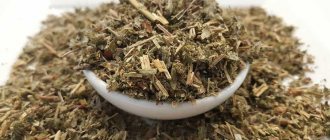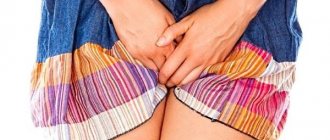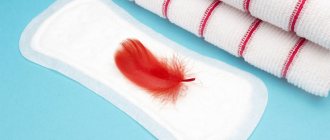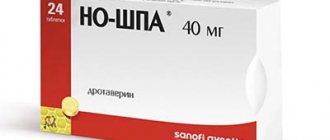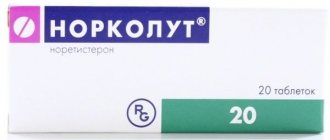Removing blood stains from beds
The unexpected onset of menstruation, heavy discharge, or an incorrectly selected pad lead to the appearance of stains on the sleeping area. You have to rack your brains about how to remove blood stains from a bed, sofa or blanket. It is advisable to act immediately, since old stains cannot be completely removed.
With a blanket the situation is simpler. Soak in cold water, then use any detergent, throw it in the machine, wash at a temperature of 30-45 degrees Celsius. Nothing bad will happen, if barely noticeable stains remain, put a duvet cover on top.
Choosing the right product
You can remove blood from a sofa or mattress using cold water, detergents or improvised means. The choice in most cases depends on the material. You can use the following tools:
- laundry soap;
- kitchen salt;
- baking soda;
- dishwashing liquid;
- washing powder;
- stain remover;
- hydrogen peroxide;
- ammonia;
- aspirin;
- lemon or citric acid;
- shaving foam;
- hair shampoo, conditioner;
- boric acid;
- mineral water.
Initially, you will have to soak the stain with cold water. In this case, use a washcloth and cotton rags. It is not the bed or sofa that should be wetted, but these objects. Blot the blood, rinse, repeat the procedure again. After there is no blood left on the washcloth or rag, start using a special or improvised stain remover. It is recommended to scrub the stain with a toothbrush. You need to clean the upholstery in the direction of the grain so that the stain does not spread - from the edges to the center. Initially, try the selected stain remover on an inconspicuous place to find out how the fabric reacts to it.
Methods for removing blood stains
The main advantage of professional stain removers is that they do not shrink fibers, do not change color, and gently clean the fabric. The products can be universal for white and colored fabrics, or targeted with a narrow spectrum of action - for black, white, colored fabrics. It will be great if you can buy just this one. Products that deserve attention: Antipyatnin, Vanish in different variations, Amway spray, Dr. Beckmann. To be fair, it is worth noting that professional stain removers do not always cope with the task, so you have to use improvised means.
- Treat the stain with cold water using a sponge or cloth, moving from the edges to the center. Rinse frequently when soiled. Lather the washcloth with laundry soap, dishwashing detergent, and powder. Remove any remaining yellow stains. If necessary, soaping is repeated. All that remains is to dry it with a hairdryer.
- Dissolve an aspirin tablet in a glass of lukewarm water, apply it to the stain with a sponge, leave for 15 minutes, rinse, use detergent to fix the result.
- Add 2 tbsp to 1 liter of cold water. spoons of kitchen salt, mix thoroughly. Apply to the problem area and leave for an hour. Remove the stain from the fabric with the remaining salt solution. If the spot is small, cook half as much, maintaining the proportions.
- Meat baking powder easily breaks down protein fibers and helps to cope with tissue fibers. In a small container mix 1 tbsp. spoon of baking powder, 2 tbsp. spoons of cold water. The porridge is applied to the blood stain, left for an hour, and washed off with cold water.
- Dilute a teaspoon of ammonia in one container and boric acid in another. 1 glass of water is required for each solution. Wipe the stain on the sofa or mattress first with diluted ammonia, then with boric acid. If there are persistent stains, you can treat the fabric with concentrated ammonia, leave for an hour, and wash with soap and water.
- Hydrogen peroxide is applied to the stain, after a minute it is washed off with a washcloth.
- Pour washing powder, rub well with a toothbrush, leave for half an hour, rinse with cold water using a washcloth.
To remove blood stains from a leather sofa, you need to prepare a solution based on detergent and ammonia. For 1 liter of water, 1 teaspoon. Wipe the surface and rinse with clean water. Repeat if necessary. Citric acid is effective in this case; juice or solution is poured onto the stains - 1 teaspoon per 500 ml of water. Dry with a hairdryer, towel, napkins.
https://youtu.be/S952yDdpJjI
Removing blood stains from different fabrics
Delicate or rough fabrics require a special approach: they can be ruined, but the stain will not be removed. Especially when it comes to colored clothes. Or about jeans, which are usually painted with faded dyes for some reason. Let's figure it out.
Rough fabrics, jeans
Alas, pads for critical days are an unreliable thing; they fail at the most inopportune moment. But jeans hug your butt so beautifully! And, by the way, their rough seam knocks your “protection” to the side. Blood from menstruation gets on the item, which is very difficult to wash: coarse fibers quickly absorb liquid, and unreliable paint makes washing difficult.
- Pour some medical glycerin into a separate container and warm it slightly by placing the bottle in warm water. Soak a cotton pad in glycerin and gently apply to the denim. Start processing from the inside out, and when the stain is thoroughly soaked, turn the jeans over and rub glycerin from the front side. Try, and your efforts will not be in vain - soon you will see that the blood turns pale, and then the stain will disappear completely.
- How to remove old blood stains from rough clothes? Try using a meat tenderizer. Suitable for removing stains from rough fabrics, jeans. The product contains enzymes - cellulose, proteases, lipase, all these components break down the blood. Soak the item in a small amount of water, placing it with the dirty part facing up. Apply 1 tbsp. l. softener on the stain. Leave it for a day. Every 1.5-2 hours, add powder, rubbing it into the fabric. Do the laundry. The softener is sold in the cooking seasoning aisle. Of course, we need a pure, unseasoned J product.
- There is another, simplified option with a meat tenderizer. Dilute the powder (1 tbsp) with water (2 tsp), apply to the stain and rub in. Once dry, rinse in cold water and then wash.
- If the stain is completely absorbed, has become old and has decided to stay with you forever, we... will still achieve our goal! Invest in a good carpet (yes, carpet) cleaner. Apply it to the blood trail and calmly put it in the washing machine, “cold water” mode. I am sure that after such a killer procedure, the obsessive pollution will go away in English.
We wash everything: satin and jeans!
Delicate fabrics: silk, satin, linen, wool
How to remove blood stains from clothes at home if we are talking about delicate fabrics?
- An amazing recipe will help. Moisten the contaminated area with warm (not hot) water and sprinkle it generously with potato starch. Treat the clothes on both sides - both the face and the back. After a few minutes, shake off the slurry and wash the item in the machine using a good washing powder.
- For white delicate fabric, the already familiar 3% hydrogen peroxide is suitable. Just dilute it with water. Proportion 1:1.
- Rinse the stain as much as possible. Then moisten a teaspoon of fine salt and apply the paste to the dirty cloth. Begin to gently wipe off the blood. Remember that salt is, after all, an abrasive. And now we are washing a delicate item that needs care. The salt granules will draw out the blood and dry out the tissue. After the procedure, the item needs to be rinsed.
White fabrics and clothes
How to remove blood stains from white fabric? Popular homemade recipes that have long received excellent reviews from both our great-grandmothers and modern cleaners will come to the rescue.
- Even white jeans can be easily washed with hydrogen peroxide. Apply peroxide to the blood stain and let it sit for half an hour. Then throw it in the machine and wash it with good powder.
- Soak a cotton pad in ammonia. Rub the dirty area. Let it sit for 5-10 minutes and rub with damp laundry soap. After 2-3 hours, wash by hand, then in the machine.
Colored fabrics and clothing
These recipes will help you deal with blood on colored clothes: down jacket, shirt, dress, and so on, without risking paint.
When washing colored clothes, be careful with chlorine!
- Soda. Dissolve 10 g of soda in 1 liter of water. Soak the item in it overnight. In the morning, wash the stain and machine wash the clothes.
- Starch. Apply a thick mixture of starch water to the stain and wait until it dries. Remove the powder and rinse the fabric.
- Laundry soap. Rub soap onto the problem area so as not to smear the blood. Leave to sour for several hours. Rub and rinse.
- Salt. Soak the item in a saline solution (1 teaspoon of salt per 1 liter of water). Let it sit for 10-15 hours. Wash it in the machine.
- How to remove old blood stains from fabric? I recommend glycerin. Heat it up and apply it to the stain. Let stand for 30-40 minutes. Rub and rinse, then machine wash. This method is also good for old stains.
How to remove old and new blood stains from other surfaces?
You can remove blood stains from different surfaces at home.
Area to remove blood How to remove it from jeans Warm glycerin works well. Heat the bottle with glycerin with boiling water. Then apply it to a sponge and rub the desired area on each side of the fabric. After which the product should be rinsed in warm water. For woolen clothes, flour or talc will do. They are applied to the stain, lightly moistened with water and rubbed. Afterwards you need to leave the item for several hours until the talc and flour dry. After drying, they are shaken off clothes and rinsed in cold water. From the mattress A stain remover will help. First, put ice on the spot and wait for it to melt. Next, apply stain remover to the blood and leave for 2-3 hours, then remove all remaining product on the mattress with a brush. From the couch Using hydrogen peroxide. Apply peroxide to the bloody mark using a swab and rub without using force.
The procedure should be performed with care to avoid damaging the tissue. After everything, let the sofa dry so that there is no smell of dampness and mustiness, and vacuum it.
On panties To remove menstrual blood from panties, first you need to soak them overnight in cold water. After this, they are pre-washed with laundry soap or stain-removing soap. Let it sit for several hours, after which it can be machine washed with the addition of powder and bleaches. On a sheet If the stain is fresh, you need to soak the sheet in ice water for an hour, then change the water and also leave it for an hour. The blood should disappear. If it has become ingrained, you need to soak the product in water with added salt for 10-12 hours. Afterwards, the sheet should be washed in a machine with stain removers and bleach. From the carpet Window cleaner is an effective solution. Spray the product onto the bloody mark, rub it lightly and leave for 5 hours. After this, the area should be wiped with a damp cloth and allowed to dry. From suede Blood should be removed from suede products immediately upon detection. A regular eraser will do for this. They should clean the entire dirty surface. Baby soap will also work. Shape soap into water and lather it. Apply the resulting foam to the surface with a sponge and rub. After half an hour, apply a dry cloth to the wet area to absorb excess moisture.
You can wash or remove bloody marks from different products made from different fabrics. You should remember which products are suitable for different types of fabrics, so as not to spoil it.
Let's look at some useful tips to remove blood from leather shoes and leather goods:
- Before you begin removing bloody marks from the skin, you should test the product.
- Dissolve soap in water at room temperature and whip up foam. Apply it to a sponge and wipe the area. After washing, wipe the area with a dry cloth.
- Hydrogen peroxide is an effective remedy. Apply it to a cotton swab, treat the product, then apply a damp cloth to it. Finally, wipe it with a dry towel.
- Liquid dough is excellent for cleaning leather products. It is applied to the stain and allowed to dry. Next, wipe it with a damp cloth.
- Aspirin will help deal with blood on a leather product. The tablet is dissolved in water and the area is rubbed with the solution using a brush. It is allowed to replace aspirin with ammonia, also diluted with water.
- Small stains can be removed using an eraser by rubbing it.
Processing dense fabrics
When interacting with dense materials, ammonia is suitable: per liter of cold liquid you will need 20 ml.
- Soak the item with ammonia for several hours.
- Afterwards, be sure to treat the problem area with cotton wool and ammonia.
- We carry out washing in the traditional way.
Medications can also be used to combat menstrual blood.
- Dissolve an aspirin tablet in a glass of water. For the best effect, you need to crush it first.
- Apply the composition to the bloody stain and lightly rub with a brush.
- Afterwards, all that remains is to rinse the product thoroughly.
It is better to first test the strength of the cleaning agent on an inconspicuous area of the fabric.
If the stain cannot be removed, the problem can be solved simply and creatively: decorate the area with an applique or a patch.
How to remove fresh blood stains from a mattress
There are many ways to remove fresh blood stains from a mattress; let’s look at the most effective ones.
https://youtu.be/-pZyFIS3-hk
Sea or table salt
Sea salt is sold at any pharmacy, but with table salt everything is much simpler - it is available in any grocery store.
In this case, you need to use salt without any additives. Take a handful of salt, place it in a container and add filtered water to it.
After this you need to add another 30 grams. table salt, then mix everything and rub the bloody stain with this mixture, cover the area with cling film.
After 30-40 minutes, remove the salt with a clean cloth. Salt absorbs dirt, including blood.
We complete the treatment procedure by blotting with a dry towel. You can also use a vacuum cleaner when finishing cleaning the bed.
Dishwashing liquid
We have already learned that hot water is contraindicated for blood stains, but cold water helps to cope with this problem very well.
You can also use ice. To prepare it, take 5 g. Place sage or chamomile (sold in pharmacies) in a container, pour in a small amount of boiling water and cover with a lid.
After 25 minutes, strain the solution through gauze folded in several layers. Pour the purified liquid into ice molds and place them in the freezer.
When the ice is ready, rub it on the problem area and immediately after this procedure, drip dishwashing detergent (ideally gel) onto the mattress.
Then rub, but not too much, the stained surface with a toothbrush and blot with a cold, damp terry towel.
The steps must be repeated until the dirt disappears. At the end of the procedure, treat the desired area with a damp cloth and remove excess moisture with a vacuum cleaner.
Ammonia
Ammonia (3%) is also effective in combating blood stains. You must first walk over the stained area with a clean cloth soaked in cold water.
Then wet the terry towel with ammonia and clean the dirt, starting from the edges.
Do this procedure several times, gradually moving towards the middle of the problem area. This way you will prevent the mark from spreading.
You can complete the cleaning using a vacuum cleaner, or leave the sofa in a well-ventilated room to dry naturally.
Baking soda
Another miracle remedy that works great on bloody stains is baking soda.
The preparation method is not complicated: mix soda with crushed sea salt in a 2:1 ratio. Then add a small amount of water to form a paste-like consistency.
Moisten the desired area with this mixture and spread over the entire stained surface of the bed. The product can be rubbed in with your finger, being careful not to get it on a clean surface.
Then leave the treated stain for at least half an hour. If it is large, then you can keep the solution on the fabric longer.
Excess product should be removed with a paper towel and the stained area of the bed should be wiped with an old toothbrush.
After this, rinse the problem area with cold water. You should dry the mattress after the procedure either in the fresh air or with a vacuum cleaner.
Hydrogen peroxide solution
It is convenient because the bottle has a narrow tip and due to this it is easy to distribute the liquid over the entire desired surface.
To remove blood, you need to pour a small amount of peroxide onto the area and immediately remove excess moisture with a terry towel - wet the stain. It is better to start processing from the edges of the stain, otherwise there is a risk that it will spread.
You can complete the procedure as in the previously described cases - using a vacuum cleaner or leaving the mattress to dry in a ventilated room.
Let's prepare the mattress for cleaning
First, the bed must be prepared for the procedure:
- You need to take a terry towel, moisten it with cold water and press firmly onto the stain. Hot water is contraindicated, because when used, the blood will not only not be washed off the bed, but will also penetrate deep into the structure of the fabric fibers.
- Immediately after wet treatment, you need to press a dry, clean cloth to the surface of the stain. It will absorb excess fluid along with blood. At the same time, do not rub the surface of the mattress too much, otherwise the stain will increase in size. It is necessary to remove moisture using driving movements.
- Wet a clean part of the towel with water again and repeat the previous steps. The procedure must be repeated until the bed fabric remains clean after contact with blood.
How to remove period blood from bed linen
If washing a fresh stain is not possible at the moment, then the item should at least be soaked. Panties or a sheet are simply soaked in cold water until there is time to wash them. You can additionally rub the marks with laundry soap and leave the items overnight.
There are various stain removers that are excellent at removing blood stains, even menstrual blood. For example, “Vanish” helps remove dirt well.
But you definitely need to pay attention to the composition of the fabric. Thus, stain removers with chlorine can ruin the design on the fabric and are not suitable for synthetics
It is best to use oxygen bleaches.
Home remedies. But what to do if you don’t have strong household chemicals at hand, but you need to wash off the stains urgently? In this case, remedies from your home medicine cabinet will help.
Hydrogen peroxide is another excellent and inexpensive way to clean blood. Simply pour the substance onto the stain and leave the product for a couple of hours. After this, the item is washed in cold water and laundry soap. But this method is only suitable for thick fabrics, for example, thick cotton panties or satin bedding.
Helps remove blood stains and ammonia. This method is not suitable for colored laundry, but on white fabric it perfectly removes all dirt. You should prepare a solution of ammonia by dissolving a large spoonful of the product in a liter of water. Soak the soiled laundry in this solution for a couple of hours. If there is no ammonia in the house, then you can also use liquid for washing glass and mirrors, since the main active ingredient in it is ammonia.
Do not rush to throw away panties that have gotten menstrual blood on them. Things can be saved using simple methods proven by many girls.
It doesn’t matter if yellow stains appear on your down winter jacket after an unsuccessful wash. It happens that you have to wash vomit stains from upholstered furniture or clothes, and it is very difficult to clean a mattress from red stains and the smell of urine, but there are methods. You can, Removing stains is always a long and labor-intensive process, especially if it concerns traces of food or
Peculiarities. Ideal for thick fabrics. The method is captivating in its simplicity. The downside is that you have to wait. In addition, the soda solution disinfects things. It is able to remove foreign odors.
Let's act
- Fill a container with a liter of cold water.
- Dissolve baking soda - two tablespoons.
- Soak the soiled item in soda water. You can not soak the entire product, but only the part where the bloody stain appears.
- Leave it on all night. Wash in a washing machine with the addition of any store-bought stain remover or rinse in soapy water.
Peroxide
Peculiarities. Helps remove blood from white clothes. It is better not to use on dark T-shirts and pants. Allows you to clean without washing, which is important if there is a “cannot be washed” icon on the clothing label. This way you can remove a stain from a suede product. You can clean your carpet using this method. But only on condition that it is light.
Let's act
- Soak a cotton pad with hydrogen peroxide (3%).
- Blot the contaminated area.
- After five minutes, remove the foam that has formed at the treatment site. Use a damp cotton pad for this.
- Repeat the steps until you see the fabric cleanse.
Starch
Let's act
- Dissolve the starch to a paste consistency.
- Distribute according to contamination.
- Wait until it dries, then carefully clean off the slurry. The blood will go away with it.
Aspirin
Peculiarities. Simple, economical and fast, but provided that there are tablets in your home medicine cabinet. The method is a salvation for woolen items.
Let's act
- Dissolve an aspirin tablet in a glass of cold water.
- Treat the stained area with the solution.
- Leave for half an hour.
- Rinse.
No one is immune from the appearance of characteristic blood stains on clothes or underwear when menstruation came suddenly or the hygiene product was chosen incorrectly. It is better to immediately wash off the blood from your period so that it is not absorbed into the fibers of the fabric. Then the contamination will be quite difficult to remove.
First of all, you need to soak the item in cool water, you can change it several times and just wash everything well. If these manipulations were carried out immediately, then there will not even be a need to use cleaning products. Fresh blood is easily washed off without leaving streaks.
It should be remembered that only cold water can remove a blood stain so quickly. If you soak an item in warm, especially hot water, the blood will only become more firmly entrenched in the fibers of the fabric. After exposure to high temperatures, only a strong cleaning agent can remove the stain, and this will definitely not be possible at work or while traveling.
Removing old stains
And if it’s quite easy to remove a fresh blood stain, then with an old one it’s the opposite. This is why blood absorption should be prevented as much as possible. For example, when you wake up, you notice that the sheet is dirty, but you don’t have time to wash it. Then at least soak it in a bowl of cold water. To rinse the sheet even more thoroughly, you can place it in a bathtub filled with water. By the evening, blood stains from menstruation will practically disappear, and you won’t have to make any special efforts to completely eliminate it and think about how to remove blood from menstruation.
As a rule, women try to wash soiled panties immediately, rather than placing them in a pile of other laundry, and they do it right
However, it happens that it is not possible to resort to this method and therefore it is important to know how to wash off old blood when it has dried
The first thing to do is rinse the affected item in cold water. Although this will not solve the problem, it will improve the washing efficiency. Next, apply laundry soap. Leave the item stained with blood for several hours, or best of all, overnight. After all these procedures, a light wash will be enough and the stain will disappear.
Stain remover
If it so happens that the previous method did not work, it makes sense to use stronger means. Most often they are necessary when the item has lain untouched for several days.
In every household goods store you can find a special soap that removes stains - “Antipyatin”. It should be used in the same way as regular laundry soap. This product is more effective and does not change the color of the item. So “Antipyatin”, perhaps, is capable, along with diamonds, of becoming the best friend of a girl who often has similar situations in her life.
You can also try more expensive stain removers such as Vanish and so on. Now they come in all kinds - liquid, dry, pencils. Just be careful not to confuse them with bleach. Otherwise, the area where the stain was will turn white, which is worse than if it just clears itself.
No less good results are obtained when using 3% peroxide. However, you should not soak the fabric in it for a long time, as it may lighten the color. A minute is enough. The product described best “knocks out” blood stains. After treating the blood stain with peroxide is completed, you can wash the item by hand or in the machine to consolidate the result. It would seem like a standard chemical product, but it is precisely this that can make life easier for more than one woman.
By following the tips above on how to remove period blood, you can easily deal with any stains while maintaining your good mood and charm.
Video - Tips for removing blood stains:
Recommendation for women on how to remove fresh blood stains
If fresh blood appears on clothes or bedding, it is very easy to wash it off. To do this, just soak the product in cold water and rinse it several times. There is no need to use detergents, stain removers or soap - a fresh stain will come off very quickly without leaving a trace.
Many women, who are caught in such trouble on the road or at work, try to wash the stain without soaking the entire item of clothing in water. This is a good solution if the thing can be removed or twisted on itself so that it can be reached; to the spot. Dry the fabric using an electric hand dryer or blotting with paper towels. Most likely, most women will agree that it is better to go through the whole day in slightly wrinkled clothes than with blood stains.
Under no circumstances use hot or even warm water - it will imprint dirt into the fibers of the fabric and complicate the washing process. After soaking in hot water, the stain can only be removed using special powerful bleaches.
As easy as it is to remove a fresh blood stain, it is just as difficult to remove an old one. Therefore, you need to try to prevent the blood from drying out and being absorbed into the fibers of the fabric. For example, if you are rushing to work in the morning and don’t have time to wash a sheet that has blood on it, take a minute to throw it into a bowl of cold water. It’s even better to run water into the bathtub to rinse the sheets. When you get home, the stain will be virtually invisible and it will come off with minimal effort.
Most women are clean creatures; they will not put soiled panties in the basket with the rest of their laundry to deal with them on occasion. This is a very correct approach, but situations are different and you need to know how to get rid of old stains.
To remove an old blood stain, you first need to rinse the item with running cold water. This will not give a visible quick result, but will prepare the fabric for washing. After this, you can apply regular laundry soap to the stain - this is one of the best means for removing menstrual blood. The item with soap should sit for several hours or even all night, if there is time. After this, just lightly wash the fabric and not even a trace will remain of the stain.
If the previous recommendation did not help, you can try stronger remedies. As a rule, you can’t do without them when a dirty item has been lying around for several days and the blood has soaked into it too much.
Any hardware store has soap for removing stains - Antipyatin;. Instructions for use are identical to simple laundry soap
Antipyatin; acts more strongly and, importantly, does not affect the color of the fabric. Therefore, it will be an excellent helper for all women who often experience troubles of this kind. You can also try special products - Vanish stain remover; or any other
There are stain removers liquid, dry and even in the form of pencils
You can also try special products - Vanish stain remover; or any other. There are stain removers liquid, dry and even in the form of pencils
It is important to always pay attention that it is a stain remover and not a bleach. Otherwise he will not only eat; stain, but will also make this area completely white
Regular 3% peroxide also gives very good results.
Its solution is too weak to lighten the item, but you still shouldn’t risk soaking the fabric in peroxide for a long time. One minute is enough. Peroxide removes blood stains better than all chemicals, literally pushing them out; them from fabric fibers. After treating with peroxide, you can additionally wash the item with laundry soap or in the washing machine. This simple chemical remedy is a true friend of women who are familiar with the recurring need to wash off blood stains from month to month.
Ordinary 3% peroxide also gives very good results. Its solution is too weak to lighten the item, but you still shouldn’t risk soaking the fabric in peroxide for a long time. One minute is enough. Peroxide removes blood stains better than all chemicals, literally pushing them out; them from fabric fibers. After treating with peroxide, you can additionally wash the item with laundry soap or in the washing machine. This simple chemical remedy is a true friend of women who are familiar with the recurring need to remove blood stains from month to month.
Why shouldn't you soak your clothes?
Remember: the sooner you start washing, the easier it will be to get rid of unpleasant marks. You can work with fresh stains only in cold water: when soaked in liquid above forty degrees, the blood will begin to coagulate. Blood protein is destroyed and intensively absorbed by the fibers.
When choosing hygiene products, we take into account the characteristics of blood discharge. Any package of pads indicates the level of absorption in the form of so-called “drops”.
If there is a shortage of time, throw the soiled item into a bowl of cold water or run a bath. Most likely, the spots will disappear on their own within a few hours.
How to remove a fresh blood stain from a sheet
Fresh blood stains can be removed with minimal effort. But even in this case, some difficulties may arise. First of all, it is recommended to try to remove biological traces from bed linen with products that are always at hand and available in every home.
How to remove blood stains from bed linen with baking soda
You can remove blood stains from a white sheet using baking soda, which is used in cooking. To do this you need:
- Wet the contaminated area with cold water.
- Sprinkle baking soda on the problem area.
- Grind a little.
- Leave for 20 - 30 minutes.
- Wash in warm water.
- Then carry out the usual washing cycle with the addition of washing powder.
If you are unable to wash your bed linen right away, you can add another component to the soda - whitening toothpaste. The procedure is as follows:
- Wet the stained area with cold water.
- Stir in a small container 1 tbsp. l. soda and the same amount of toothpaste (it is better to choose pure white toothpaste without colored inclusions).
- Apply the mixture to the blood trail.
- Leave to act for 20 minutes.
- Wash in warm water.
How to remove blood from a sheet with aspirin
Regular aspirin, which is taken for fever and headache, will help remove blood from bed linen.
- Crush 10 - 15 tablets of the medicine.
- Add a little water to make a paste.
- Apply to dirt.
- Wait no more than 30 minutes.
- Wash the product in the usual way.
How to remove blood from bed linen with hydrogen peroxide
Disinfectant can also remove blood stains from sheets. It is best to use peroxide only on light-colored items. The withdrawal method is as follows:
- Lay the sheet out on a flat surface.
- Pour a little peroxide onto the problem area.
- A reaction of the drug with the blood must occur - foam forms on the tissue. After it fades, you can blot the treated area with a cotton pad and repeat the procedure.
As soon as there is practically no trace left of the blood, the sheet can be washed with powder.
It is better to use hydrogen peroxide only on light-colored fabrics, as this product can seriously “eat away” the color. If you plan to use peroxide on colored bed linen, it is best to conduct a preliminary test on an inconspicuous area of the fabric.
How to remove blood stains from sheets with starch
Starch is a natural stain remover that copes well with biological stains. It will also help remove blood:
- Pour starch into a small saucer.
- Add some water.
- Apply the resulting slurry to the dirt.
- Leave for about an hour.
- Wash bed linen.
Attention! Starch can also be applied dry. Only the fabric must first be moistened with cool water. For dark bedding sets, you can use a slightly different option for using starch:
For dark bedding sets, you can use a slightly different option for using starch:
- Moisten the contaminated area.
- Sprinkle starch on it.
- Wait 60 minutes.
- Drop 2 - 3 drops of brilliant green into a bowl of cold water.
- Soak the laundry.
- Wash as usual.
This method allows not only to remove the bulk of the contamination, but also to “tint” traces of the presence of blood on the fabric.
If you don’t have starch on hand, you can use fresh potato tubers. To do this you need:
- Peel the potatoes.
- Grate it on the finest grater.
- Apply the paste to the stained area.
- Leave for 2 - 3 hours.
- Discard dried mashed potatoes.
- Wash the product with powder.
How to remove blood stains from bed linen using household chemicals
Household chemicals are considered very effective in combating blood stains on bed linen. It can be selected for any type of fabric, even used on colored items. The only disadvantage of such funds is that many of them are expensive and are not always available.
- Vanish bleaches. Oxygen bleaches of this brand cope well with many stains, including blood on bed linen. To remove it, you must strictly follow the instructions. It is usually recommended to directly apply the product to the stained area, and then add bleach to the washing machine.
- Amway oxygen bleaches. This brand's product line includes a variety of stain-fighting products. Some of them will help remove blood. Application is similar to other bleaches.
- Laundry soap or Antipyatin. This household chemical is one of the most common and quite effective. First you need to moisten the sheet with cold water, then rub the problem area with soap, wait from an hour to three, and wash the product.
- White. Despite the fact that many housewives do not recommend washing off blood with bleach and other chlorine-containing preparations, sometimes they are the only way out in this situation. If the fabric allows, you can apply a small amount of white to the stained area, wait a few minutes, rinse, and soak in water with white added for 5 to 7 hours.
- Dishwashing liquid. Since blood is a biological material, traces of it can be washed off using regular dishwashing liquid. To do this, apply the product to the stained area, rub, and leave for 30 - 40 minutes. Wash afterwards. If after the first attempt it was not possible to cope with the contamination, the procedure can be repeated.
Glycerin for removing stains from upholstered furniture
You can wash periods from a sofa or mattress using cold glycerin:
- Place the product in the freezer for 15 minutes.
- Apply a thin layer of glycerin for half an hour.
- Rub the problem area well with a toothbrush.
- Wipe off any remaining substance with a damp cloth or towel.
- If necessary, repeat all steps several more times.
- Remove excess moisture from the mattress with chalk and vacuum.
Chilled glycerin is a good stain remover without washing. In the case of clothing, it is better to treat bloody marks with a warm substance. But for the mattress, citric and boric acid, oil softener or carbonated water are also suitable.
Special means
For a more effective way to remove blood stains, use special stain removers.
The stores offer a huge selection of stain removers in the form of spray, shampoo, powder, and gel. soap, pencil. Basically, they all act directly on the stain without softening the fabric fibers.
To remove blood stains from the sofa, choose universal products or those with a narrow spectrum of action.
The most popular and effective stain removers are Vanish, Antipyatnin and Dr. Beckmann.
Vanish
The international brand produces a huge line of stain removers with a narrow range of effects. Popular among housewives. Has good reviews.
Vanish Oxi Action spray for carpets and upholstery can handle blood stains.:
Before treatment, thoroughly vacuum the sofa.
- Shake the bottle well and spray the liquid onto the stain from a spray bottle.
- Wipe with a soft cloth or sponge.
- Leave for five minutes.
- Remove the product with a clean cloth.
Vanish spray for upholstery has the following advantages:
- The composition contains surfactants, surfactants have a beneficial effect on the tissue.
- Safe for humans too.
- Easy to use.
Minuses:
- Not suitable for products made of genuine leather and leatherette.
- People with allergies need to be careful.
- High price. Varies from 300 rubles and above.
Antipyatnin
Antipyatnin stain remover is available in the form of soap . Universally removes all types of stains. To get rid of bloody stains on your sofa upholstery, use a damp, soft cloth or sponge to clean the area. Blot the stain and leave for 20 minutes. If necessary, scrub the stain and rinse with cold water. Dry with a towel.
Advantages:
- Contains natural ingredients. Absolutely safe for humans. Can be used for children's clothing.
- Suitable for all types of fabrics. Even for those who require delicate care.
- Removes stains in cold water.
- Easy to use.
- Works well on stubborn stains.
- Low price. In stores, soap costs from 20 rubles.
Dr. Beckmann
Brand Dr. Beckman make a large line of stain removers. Each of which fights a specific type of stain. Dr. Beckmann Expert blood and protein stains is designed to combat blood stains . To remove blood from a sofa, soak the stain with the product. Leave for 15 minutes. Dry with a damp towel.
Advantages:
- It acts directly on the protein, thereby speeding up the removal process.
- Contains surfactants.
- Has a lock against accidental opening.
Minuses:
- With a pungent odor.
- Not suitable for leather, cashmere, carpets.
- During processing, a large amount of product is consumed.
- Small volume.
- High price. In stores they sell from 200 rubles.
How to remove dried blood stains from clothes
Often there is a need to wash off blood that has dried and become firmly absorbed into the fabric. Even under a trace of fresh blood, an ingrained layer that is difficult to wash off is often discovered. It occurs due to the clotting properties of blood. This is very useful for the wound, as a crust forms on it, preventing further bleeding. For clothing, these chemical processes are not only useless, but also undesirable, because a very easy-to-remove stain turns into a real problem. The same hydrogen peroxide can help out. The stain should be treated with its solution, left to “hiss”, and when the foam decreases, rinse under running cool water. This will have to be repeated several times. After this procedure, you should try to remove the remaining stains with laundry soap. At this stage the water should be made warmer. Next, the item is sent for washing - manual or machine.
If you don't have hydrogen peroxide at home, you can use any bleach that contains it. Often such household chemicals are called peroxide or oxygen bleaches. But even when using such strong means, we do not forget that first we need to remove everything that dissolves with cold water, so as not to create difficulties in the future. Fabrics with patterns can be treated well with compounds designated as “bleach for colored items.” The strange name is nothing more than a marketing ploy to designate a strong stain remover that does not harm fabric dyes.
Handwash
The result of working on the stain must be fixed by washing the entire product, otherwise characteristic streaks will remain on the dried fabric at some distance from the former stain. You need to immerse the item in a slightly warm solution of washing powder or soap, add a little vinegar to soften the water, and go over the entire item with light rubbing movements. If the clothes are wool, then you should not rub them too much to prevent pilling from forming. It is better to squeeze and release each section of the item without removing it from the solution. Then it is recommended to rinse the clothes in warm and cold water.
Why can’t you heat the washing water too much, even if the stain is almost gone and has become light or invisible? Blood consists of several types of protein. For example, hemoglobin is a colored protein that, when folded, produces the characteristic rust color. After all, both when the metal oxidizes and when the blood dries, iron salts are formed. But blood also contains colorless protein components, which, when coagulated, can leave yellowish traces that are difficult to wash off.
Machine washable
If you are used to almost boiling laundry in the washing machine, then do not use this method to remove blood from clothes. It’s better to even spin things twice in the machine than to “brew” a bloody stain. You should resort to machine washing after manual removal of blood with hydrogen peroxide, soap, bleach or other means. If the item is generally clean and the stain removal result is satisfactory, then the machine should be put into rinse mode. Otherwise, wash off the remaining blood in a mode suitable for this type of fabric, but only at a temperature of 30°. If you accidentally start the wash at 40°, it’s not a problem, but this is a borderline temperature - on the verge of protein coagulation, so you need to be careful. It is advisable to pause the wash, switch to a lower temperature, and at the same time check the condition of the clothes.
Since washing is carried out in cool water, the best solution would be a biopowder containing enzymes. This detergent does an excellent job of removing protein stains.
Removing dried blood
How to wash blood from clothes if quite a lot of time has passed?
Such troubles are especially common during menstruation. Be sure to soak the stained area in ice water, and after 2 hours, try to wash off the dried blood using one of the methods suggested below.
Dishwashing gel
It may sound strange, but in many cases enterprising housewives use this particular remedy to combat serious pollution. Apply the gel to the fabric, leave for half an hour, wash. Repeat as necessary.
Soda solution
Pour baking soda into cool water (add 2 tablespoons per liter). Soak the stained area overnight. After about 10 hours, try to finally remove any remaining blood with a stain remover. Rub it into the fabric with a cosmetic pad, then you can wash it completely.
Salt solution
For white clothes, prepare a saline solution (a tablespoon per liter of water is enough). Immerse your clothes in it and leave it again overnight, after which you can wash off any remaining dirt in the usual way. The main thing is not to overdo it with salt, because protein dissolves only in a weak salt solution. So very salty water can only harm the process.
Glycerol
How to remove blood from jeans? Thick dark fabric is not so easy to tidy! Warm glycerin will help remove old blood stains from jeans. Place the bottle of glycerin in warm water for a couple of minutes. Moisten the cosmetic disc with it, wipe thoroughly first from the wrong side, and only then from the front. Don't stop until the disc stops getting dirty. All that remains is to wash the glycerin off the jeans.
Step by step removal
For light jeans or a white nightgown, you can use a different method. You will need ammonia, hydrogen peroxide, soap
Treat the material very carefully with ammonia first. Has the stain disappeared? What a score! But in most cases, light brown stains still remain on the fabric.
Try removing the blood with hydrogen peroxide. Wipe the desired areas thoroughly with it, then try to wash off any remaining blood with laundry soap. You can also soak it for a quarter of an hour in a soapy solution. At the end, be sure to spin the item in the washing machine.
Before using all of the above products, perform a test on an inconspicuous area of clothing and observe how the material reacts to peroxide and ammonia. If there are no changes in color or structure, feel free to use them!
Starch
Blood can be removed from delicate materials (chiffon, silk) with starch. Moisten the affected area and rub it with starch on both sides. Wait for the paste to dry, shake off any remaining starch from the fabric. Rinse clothes in water acidified with vinegar.
How to remove fresh blood stains
If you have a blood stain on your clothing, immediately wash it with cold water.
Important! Never try to remove blood with hot water.
This approach will make the situation worse. Below are the most popular methods for removing stains at home in full detail.
Hydrogen peroxide
- After soaking with cold water, pour hydrogen peroxide or chlorhexidine into the dirt. Be careful not to allow any liquid to come into contact with the clean surface, as this may cause the fabric to fade.
- Wait 25-30 minutes.
- Blot the area to be treated with a paper towel or clean, white rag.
- The stain should become lighter or disappear. For complete removal, wash the entire product in the washing machine or by hand as you usually do.
IMPORTANT: Hydrogen peroxide can be replaced with table vinegar or sparkling water.
Ammonia
How to wash blood from a sheet is a pressing question for many girls during menstruation. Fresh blood stains can be easily removed with ammonia.
Ammonia is too caustic, so it is not recommended to use it in its pure form - it must be diluted.
One convenient option is glass cleaner. It contains ammonia, as well as fragrances that help quickly remove old dirt. To do this, wet the cloth with cold water, then spray the spray on the problem area. Leave for 15 minutes. When it becomes paler, wash it with laundry soap.
If the fresh blood stain is too large, you can use diluted ammonia. To do this, dilute 30 ml of liquid in 220 ml of distilled water. Use a spray bottle to apply. This way the product will be distributed evenly. After 40-50 minutes, blot the area with a clean rag and wash the clothes in cold water.
IMPORTANT: Ammonia will corrode colored fabric, destroying the paint.
Baking soda
A paste is prepared from baking soda and water, which is carefully applied with a toothbrush to a fresh stain.
Then iron the area with a white cotton cloth and leave it to dry in the open air.
Baby powder and corn starch are used in a similar way.
Salt
Salt, combined with the harsh environment of liquid soap or dishwashing detergent, does an excellent job of removing fresh blood on clothes. Leave the mixture on for 30 minutes and then simply rinse with cold water.
Natural stain remover
Supporters of environmentally friendly products will really like this method. A simple, gentle stain remover is made from:
- 30 g baking soda;
- 30 g chlorhexidine;
- 15 g cold water.
The mixture is shaken, then applied in an even layer. Exposure to the mixture is allowed for no more than 10 minutes, then it is washed off. If the stain does not disappear, repeat the procedure 2-3 more times.
Instead of soda, you can use citric acid. This solution removes stains from cotton.
Removing fresh stains
No one is immune from the appearance of characteristic blood stains on clothes or underwear when menstruation came suddenly or the hygiene product was chosen incorrectly. It is better to immediately wash off the blood from your period so that it is not absorbed into the fibers of the fabric. Then the contamination will be quite difficult to remove.
First of all, you need to soak the item in cool water, you can change it several times and just wash everything well. If these manipulations were carried out immediately, then there will not even be a need to use cleaning products. Fresh blood is easily washed off without leaving streaks.
If an unpleasant incident occurs at work, you can easily do the laundry in the toilet, thoroughly washing only the area where the blood got in. You can then dry everything with a hand dryer, speeding up the process by using a paper towel. It is better to feel the unpleasant dampness of your trousers or skirt for a short time, but at the same time maintain a presentable appearance, without thinking about possible stains.
It should be remembered that only cold water can remove a blood stain so quickly. If you soak an item in warm, especially hot water, the blood will only become more firmly entrenched in the fibers of the fabric. After exposure to high temperatures, only a strong cleaning agent can remove the stain, and this will definitely not be possible at work or while traveling.
